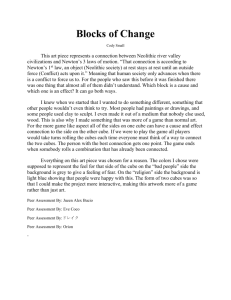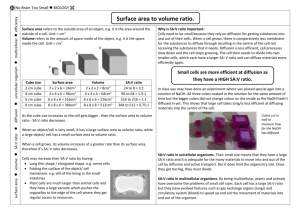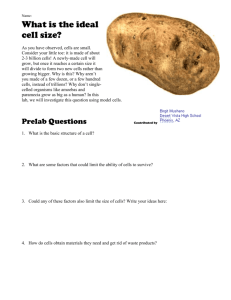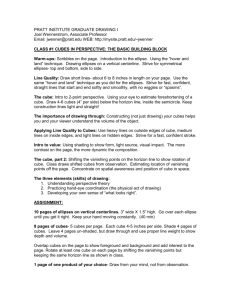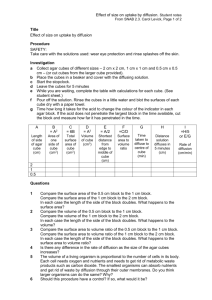File - Mr. Holmes Biology
advertisement
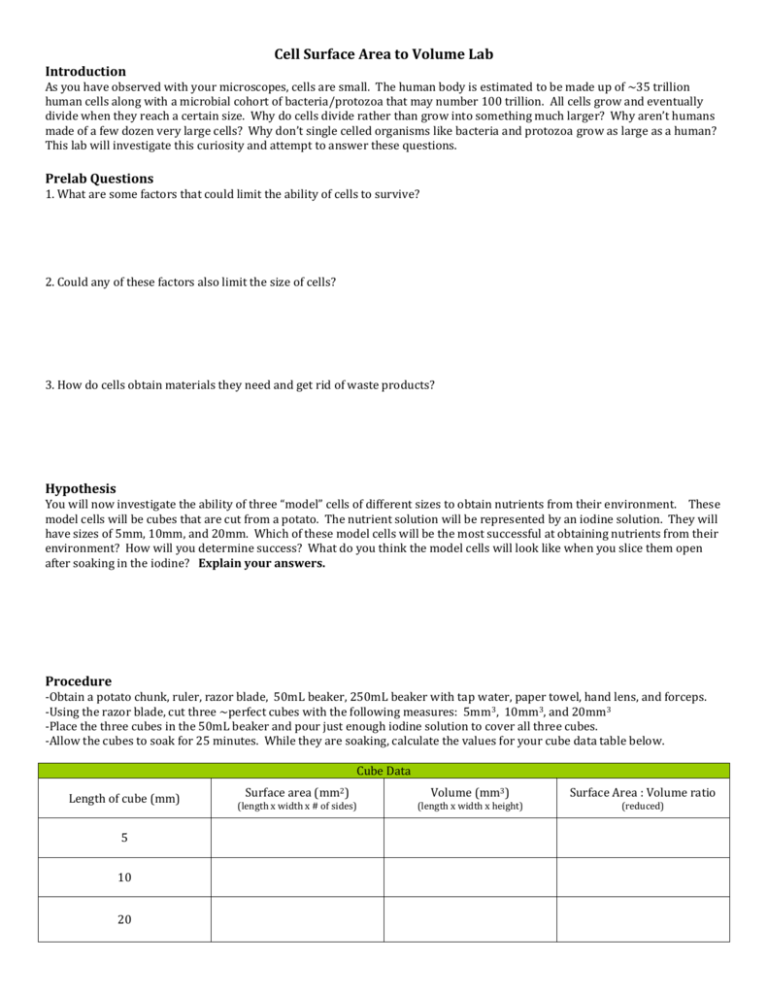
Introduction Cell Surface Area to Volume Lab As you have observed with your microscopes, cells are small. The human body is estimated to be made up of ~35 trillion human cells along with a microbial cohort of bacteria/protozoa that may number 100 trillion. All cells grow and eventually divide when they reach a certain size. Why do cells divide rather than grow into something much larger? Why aren’t humans made of a few dozen very large cells? Why don’t single celled organisms like bacteria and protozoa grow as large as a human? This lab will investigate this curiosity and attempt to answer these questions. Prelab Questions 1. What are some factors that could limit the ability of cells to survive? 2. Could any of these factors also limit the size of cells? 3. How do cells obtain materials they need and get rid of waste products? Hypothesis You will now investigate the ability of three “model” cells of different sizes to obtain nutrients from their environment. These model cells will be cubes that are cut from a potato. The nutrient solution will be represented by an iodine solution. They will have sizes of 5mm, 10mm, and 20mm. Which of these model cells will be the most successful at obtaining nutrients from their environment? How will you determine success? What do you think the model cells will look like when you slice them open after soaking in the iodine? Explain your answers. Procedure -Obtain a potato chunk, ruler, razor blade, 50mL beaker, 250mL beaker with tap water, paper towel, hand lens, and forceps. -Using the razor blade, cut three ~perfect cubes with the following measures: 5mm 3, 10mm3, and 20mm3 -Place the three cubes in the 50mL beaker and pour just enough iodine solution to cover all three cubes. -Allow the cubes to soak for 25 minutes. While they are soaking, calculate the values for your cube data table below. Cube Data Length of cube (mm) 5 10 20 Surface area (mm2) (length x width x # of sides) Volume (mm3) (length x width x height) Surface Area : Volume ratio (reduced) -After 25 minutes, remove the three cubes from the iodine using the forceps. Swirl each cube in the 250mL beaker of tap water to remove excess iodine. Place the cubes on your paper towel. Return the iodine solution to the teacher’s container. -Slice each cube in half using your razor and immediately rinse each piece again. Using the hand lens and the ruler, measure the iodine penetration into the interior of the potato on all four sides in millimeters. Write the average in the table below. -Clean up your work area and return all supplies to their proper storage location. Diffusion of Iodine Cube Size Depth of Diffusion(mm) Time(min) Rate of Diffusion(m/min) 5 10 20 Now calculate the % volume of the “model” cells that received iodine stain. Use the equation below to complete the table. % volume diffusion of iodine Total cube volume(mm3) Unchanged cube side length(mm) (subtract diffusion depths on both sides) Unchanged cube volume(mm3) % cube volume that received iodine Post Lab Questions 1. If each cube represented a living cell, and the iodine solution was a substance needed within the cell, what problem might the largest cell have? 2. Examine your data in table 1, describe the relationship between surface area and volume as a cell grows larger. 3. Which model cell was most successful at receiving iodine? Provide specific quantitative/qualitative data as evidence. 4. What is the significance of surface area to volume with respect to living cells and their sizes? 5. Make a graph of your data that will allow you to predict % volume of cube changed for hypothetical cubes: 25mm 3, 40mm3



